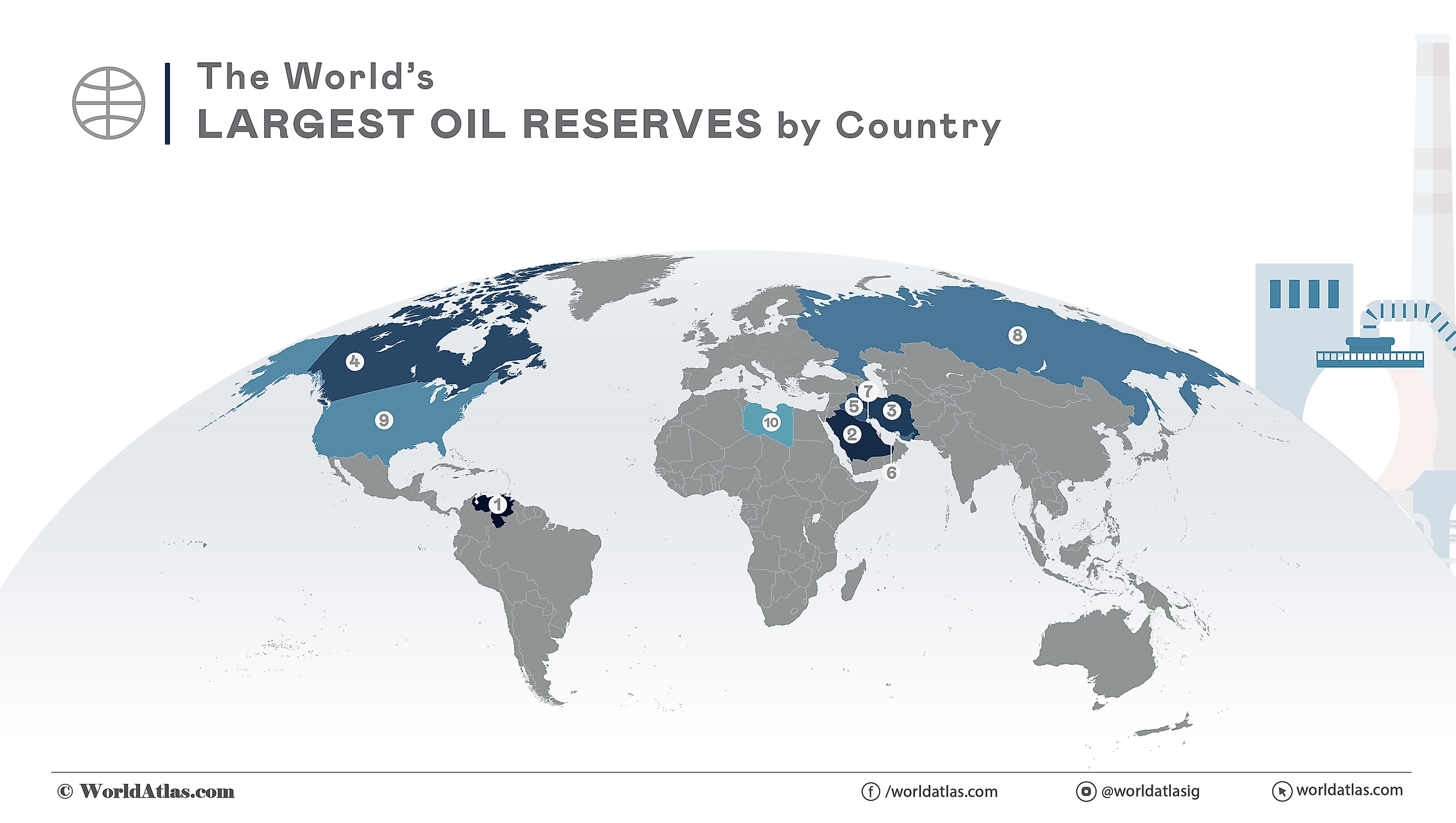
The World's Largest Oil Reserves by Country In 2024
Access to natural resources can be what makes and breaks a country's entire economy. Oil, in particular, has been one of the most valuable resources on Earth for the last 100 years and has been responsible for catapulting otherwise poor countries into thriving modern states. To assess the largest reserves that exist in 2024, data for this ranking was received primarily from OPEC's most recent report; however, OPEC does not consider Canada's oil sands, which this ranking does account for, which is why Canada ranks fourth. The largest oil reserves in the world are in Venezuela, which possesses 303 billion barrels. Second is Saudi Arabia, with 267 billion barrels, and third is Iran, with 208 billion barrels.
Top 10 Oil Reserves By Country
| Rank | Country | Oil Reserves - OPEC |
|---|---|---|
| 1 | Venezuela | 303.22 Billion Barrels |
| 2 | Saudi Arabia | 267.19 Billion Barrels |
| 3 | Iran | 208.60 Billion Barrels |
| 4 | Canada | 163.63 Billion Barrels |
| 5 | Iraq | 145.02 Billion Barrels |
| 6 | United Arab Emirates | 113.00 Billion Barrels |
| 7 | Kuwait | 101.50 Billion Barrels |
| 8 | Russia | 80.00 Billion Barrels |
| 9 | United States | 55.25 Billion Barrels |
| 10 | Libya | 48.36 Billion Barrels |
Click Here To Jump To: All Countries With Oil Reserves In 2024 Ranked By OPEC
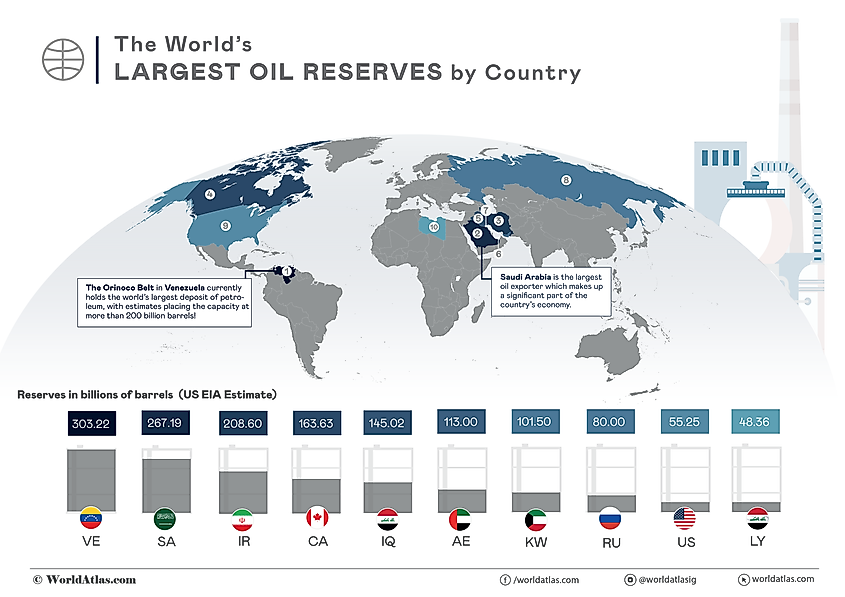
1. Venezuela - 303 Billion Barrels
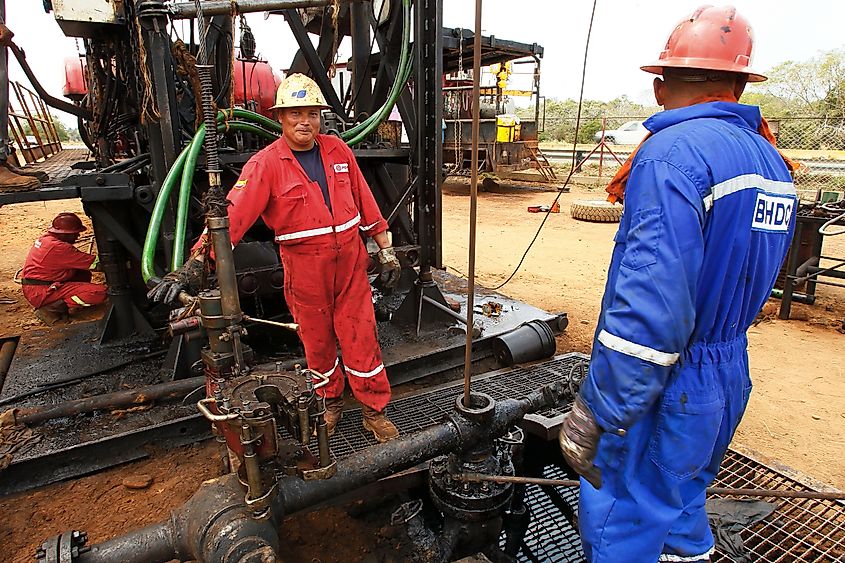
A surprise to some, it is actually Venezuela that owns the top spot in terms of overall oil reserves. Despite the mountains of money this could generate for the country, Venezuela has largely squandered this gift through a series of poor planning, corruption, and government interference.
Venezuela has also struggled to access its vast oil fields and ranks quite low in terms of overall oil production. Venezuelan crude oil is heavy and takes considerable amounts of labor and technological assistance to utilize properly. Beginning in 2020 and continuing today, Venezuela has worked closely with Iran to boost production of refined crude oil.
2. Saudi Arabia - 267 Billion Barrels
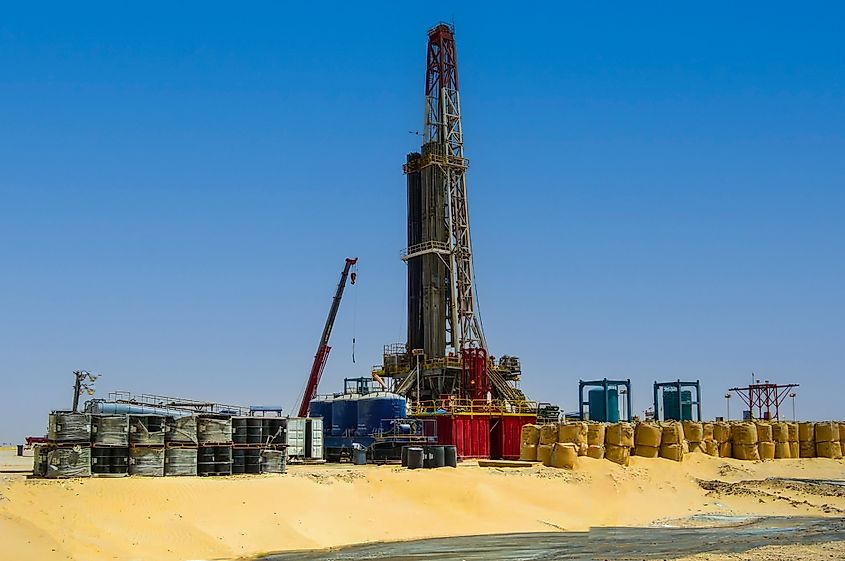
Often labeled as a "petrostate," Saudi Arabia has used its near-endless oil reserves to transform itself into one of the richest countries in all of Asia, let alone the Middle East. Even though Saudi Arabia might not have the largest proven reserves, it certainly puts them to good use.
Saudi Arabia produces the second most amount of oil in the world and turned out an average of 12.14 million barrels per day in the last several years. Saudi oil is much easier to access too and is helped by a strong government and superb infrastructure.
3. Iran - 208 Billion Barrels

Oil is Iran's largest export and serves as the backbone of the economy. Iran has a long list of customers within Asia who are in desperate need of fossil fuels to power their economies.
Iran has no plan to slow down its production and has invested close to $500 billion into its oil sector since 2020. If trends continue, Iran will likely remain one of the leading oil producers for decades to come.
4. Canada - 163 Billion Barrels
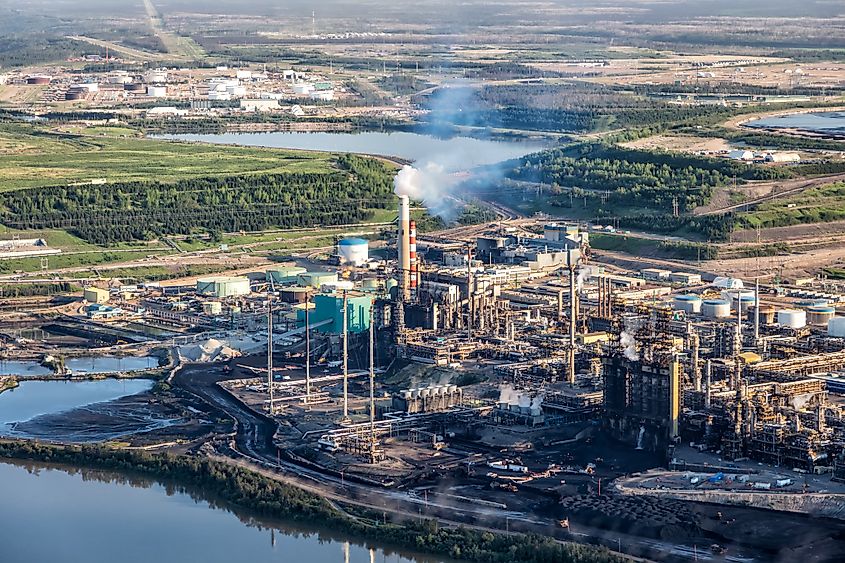
Canada's relationship with its oil sector is an outlier on the world stage. The vast majority of its oil reserves can be found in the enormous Alberta oil sands in the northern portion of the province. This oil is notoriously hard to access and even more difficult to process, making the task both tiresome and expensive.
The oil sands have been in the crosshairs of environmental groups for decades, and the future of Canadian oil is still uncertain. Regardless of its controversy at home, oil from Canada helps fuel many economies internationally, with the majority of exports finding their way into the United States.
5. Iraq - 145 Billion Barrels
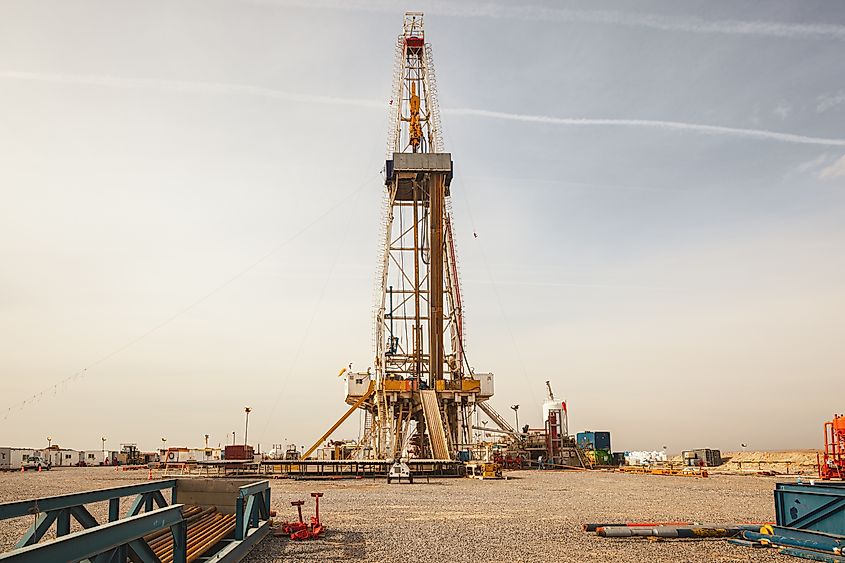
Due to the relative instability that has plagued Iraq since the early 2000s, it has been difficult for experts to pinpoint the exact amount of oil that the country has available. Estimates from various sources place total oil reserves at anywhere between 112 and 300 billion barrels.
Regardless of the true number, Iraq sits high on the list of overall oil production. All of this is achieved even though Iraq does not use the majority of its oil fields. However, this could change as plans have been announced to increase overall production in 2025.
6. United Arab Emirates - 113 Billion Barrels
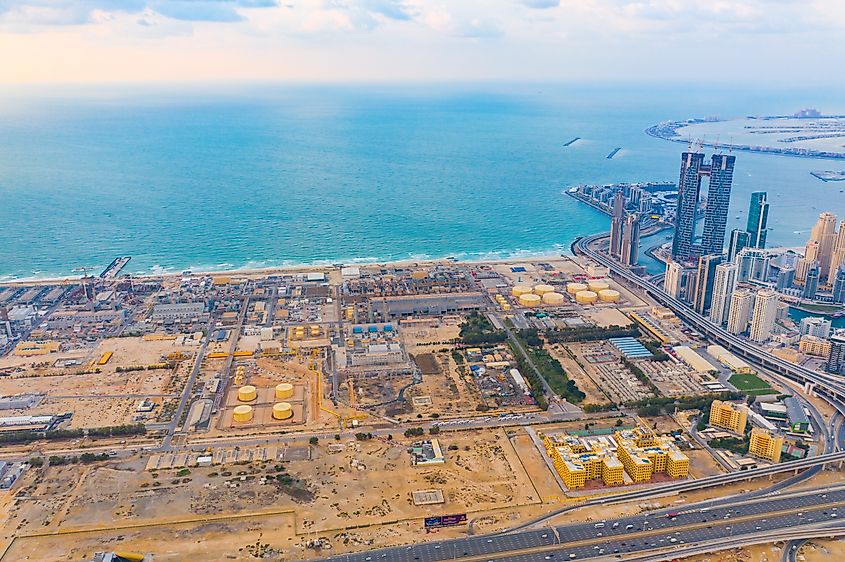
The United Arab Emirates (UAE) is another Middle Eastern country that owes much of its wealth to the oil reserves that are present within its borders. The UAE produces more than 3 million barrels of oil each day and is also the fifth largest exporter of oil in the world.
The wealth that the UAE has been able to generate thanks to its oil exports can be seen all over the country. Dubai in particular has quickly become a world-class city off the back of its booming oil sector. The UAE has also made serious ground in diversifying its economy away from oil alone.
7. Kuwait - 101 Billion Barrels
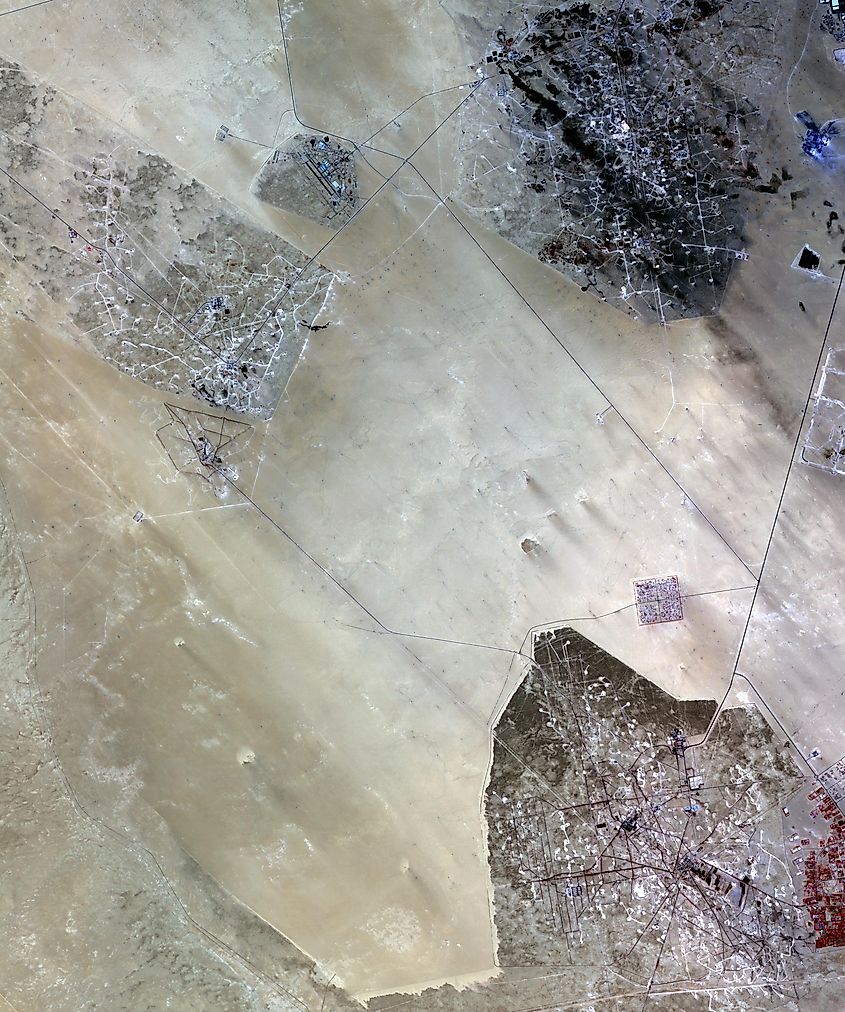
Kuwait has always been a big player when it comes to oil. In 1938, oil was first discovered in Kuwait and has changed its trajectory ever since. Its largest oil field, Burgan Field, is the second-largest conventional field in the world and holds around 70 billion barrels of crude oil.
Although oil production is still high, some of Kuwait's oil fields are starting to show their age and have begun to slow down in the face of international competition. In response, the Kuwaiti government has made considerable investments to help rejuvenate this critical part of the economy.
8. Russia - 80 Billion Barrels
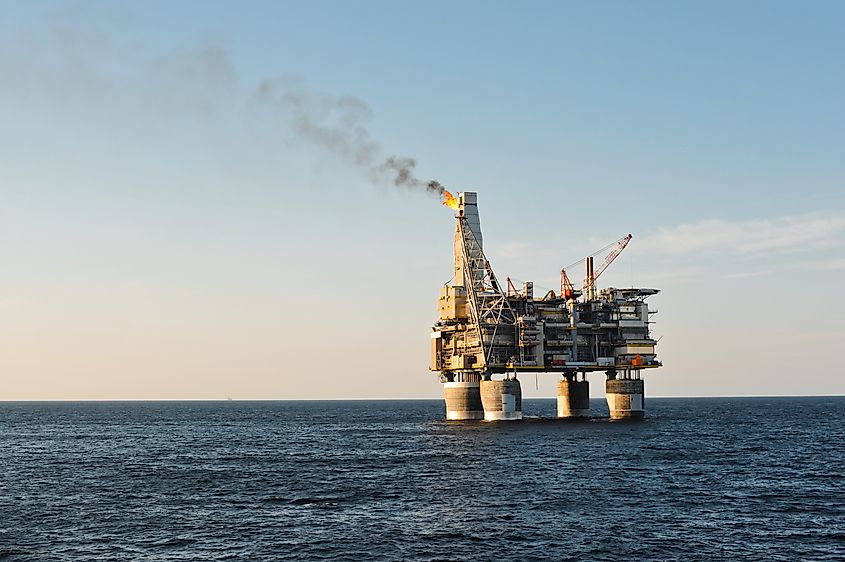
Russia's oil exports used to serve as the main source of energy for many of Europe's economies, but this abruptly ended in the wake of the Russia-Ukraine War in 2022. As the war still rages on, Russia has been hit with harsh sanctions and is essentially locked out of the European market. Russia is now forced to look elsewhere for customers.
The majority of Russian oil fields can be found in the far reaches of Siberia. The true size of Russian oil reserves has yet to be fully explored and it is likely that there are significant amounts of crude oil that remain undiscovered in its vast wilderness.
9. The United States of America - 55 Billion Barrels
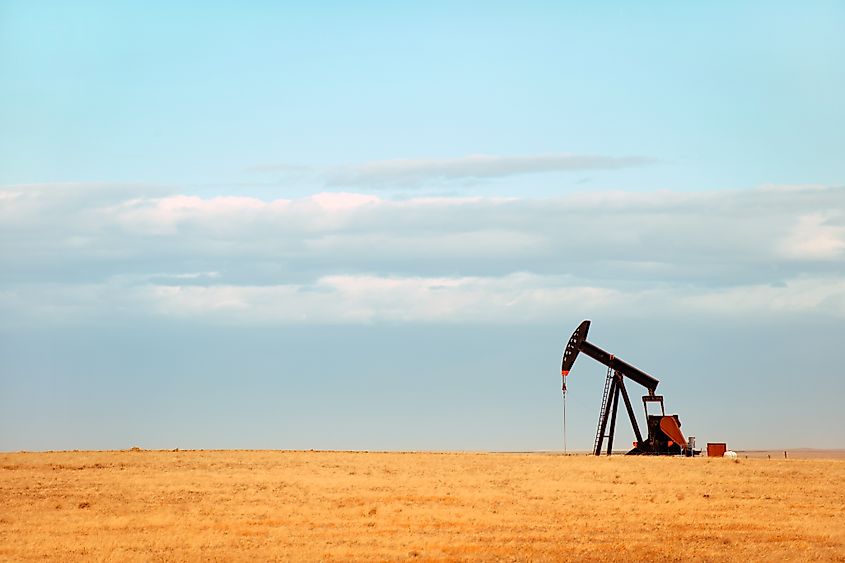
The oil business in the United States has seen its ups and downs over the decades. The oil industry rose in production between 2006 and 2023 after years of decline beginning in the 1980s. The major oil fields in the USA are located in Texas, North Dakota, Alaska, California, and Montana.
Even though the total oil reserves within the United States are not enormous, it is able to produce oil like no other and manages to refine 12 million barrels per day, a number that is still the highest in the world. The largest importers of American oil are Mexico and China at 11% and 10%, respectively, according to the percentage share of total US petroleum exports in 2023.
10. Libya - 48 Billion Barrels
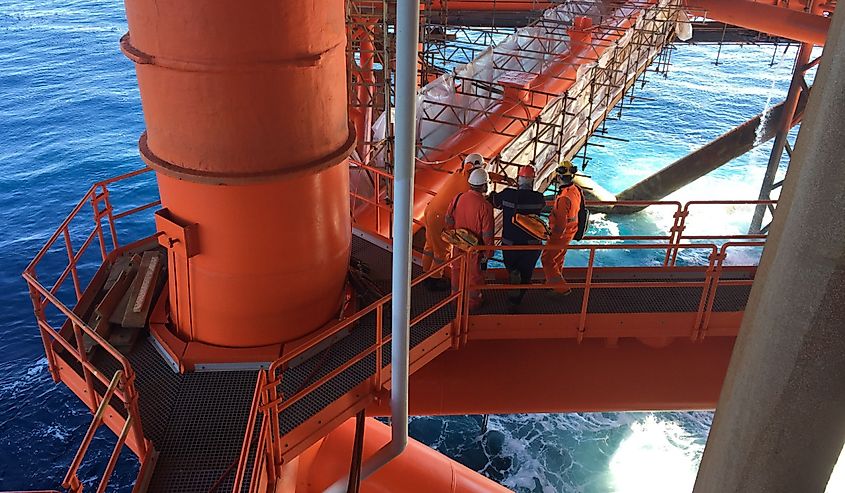
Libya is a relatively new player in the oil business with much of its reserves being discovered in the late 1950s and early 1960s. The discovery of oil was transformative at the time and was used to fund public works, education, and healthcare.
Sadly, many of the benefits that were born from the initial discovery of oil have since dried up. Libya now suffers from chronic corruption, political instability, and conflict. In spite of its troubles, the oil sector in Libya is starting to grow again, albeit, at a slow pace.
Final Thoughts
Even as large parts of the world look for alternative sources of energy, oil remains as valuable as ever. Even if the Western World does eventually move away from oil completely, the economies of Asia and Africa will certainly not.
All Countries With Oil Reserves In 2024 Ranked By OPEC
| Rank | Country | Oil Reserves - OPEC Report |
|---|---|---|
| 1 | Venezuela | 303.22 Billion Barrels |
| 2 | Saudi Arabia | 267.19 Billion Barrels |
| 3 | Iran | 208.60 Billion Barrels |
| 4 | Canada* | 163.63 Billion Barrels |
| 5 | Iraq | 145.02 Billion Barrels |
| 6 | United Arab Emirates | 113.00 Billion Barrels |
| 7 | Kuwait | 101.50 Billion Barrels |
| 8 | Russia | 80.00 Billion Barrels |
| 9 | United States | 55.25 Billion Barrels |
| 10 | Libya | 48.36 Billion Barrels |
| 11 | Nigeria | 36.97 Billion Barrels |
| 12 | Kazakhstan | 30.00 Billion Barrels |
| 13 | China | 27.00 Billion Barrels |
| 14 | Qatar | 25.24 Billion Barrels |
| 15 | Brazil | 13.24 Billion Barrels |
| 16 | Algeria | 12.20 Billion Barrels |
| 17 | Ecuador | 8.27 Billion Barrels |
| 18 | Norway | 7.57 Billion Barrels |
| 19 | Azerbaijan | 7.00 Billion Barrels |
| 20 | Mexico | 5.56 Billion Barrels |
| 21 | Oman | 5.37 Billion Barrels |
| 22 | Sudans | 5.00 Billion Barrels |
| 23 | Vietnam | 4.40 Billion Barrels |
| 24 | India | 4.37 Billion Barrels |
| 25 | Malaysia | 3.60 Billion Barrels |
| 26 | Egypt | 3.30 Billion Barrels |
| 27 | Argentina | 2.84 Billion Barrels |
| 28 | Angola | 2.55 Billion Barrels |
| 29 | Syrian Arab Rep. | 2.50 Billion Barrels |
| 30 | Indonesia | 2.25 Billion Barrels |
| 31 | Colombia | 2.04 Billion Barrels |
| 32 | Gabon | 2.00 Billion Barrels |
| 33 | Congo | 1.81 Billion Barrels |
| 34 | Australia | 1.80 Billion Barrels |
| 35 | United Kingdom | 1.80 Billion Barrels |
| 36 | Brunei | 1.10 Billion Barrels |
| 37 | Equatorial Guinea | 1.10 Billion Barrels |
| 38 | Turkmenistan | 600 Million Barrels |
| 39 | Uzbekistan` | 594 Million Barrels |
| 40 | Ukraine | 395 Million Barrels |
| 41 | Denmark | 340 Million Barrels |
| 42 | Belarus | 198 Million Barrels |
| 43 | Chile | 150 Million Barrels |
*Note: All data is sourced from the most recent OPEC report except for Canada's Oil Sands.











